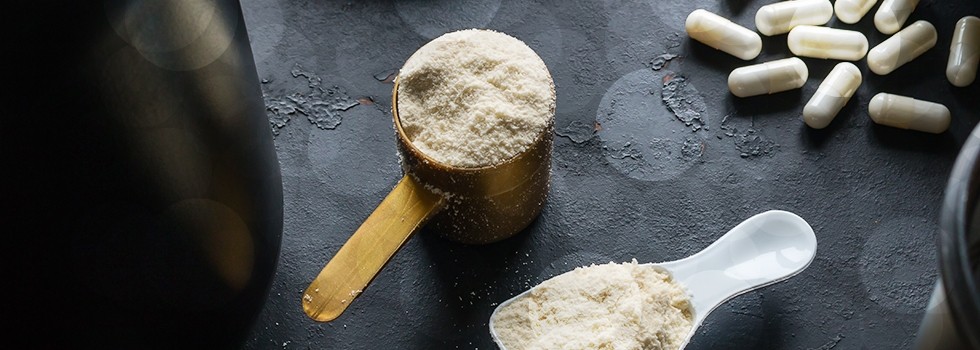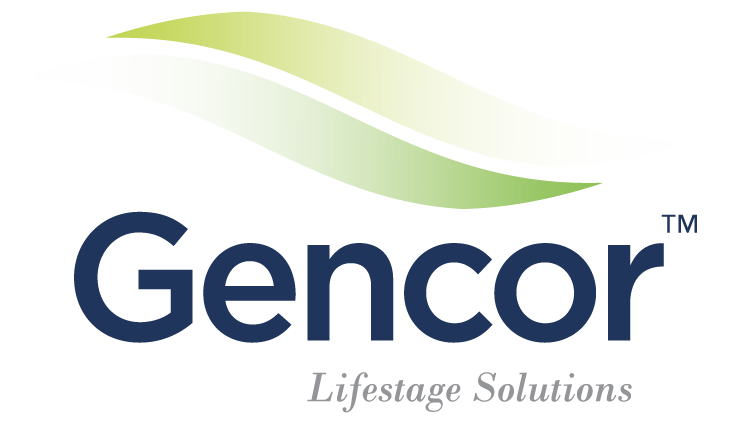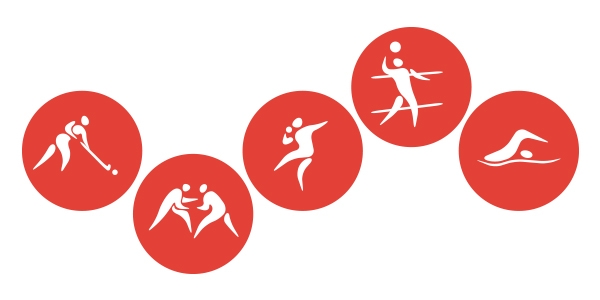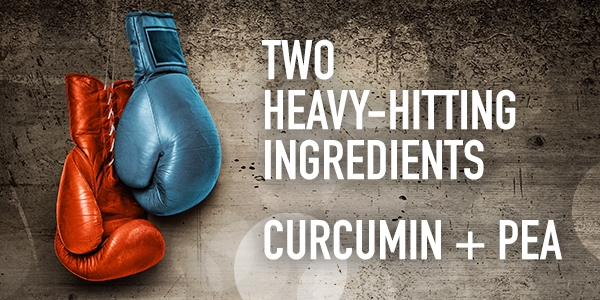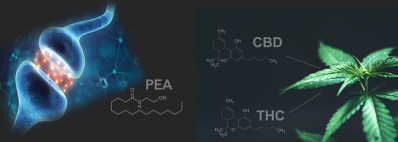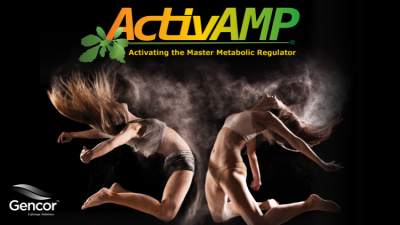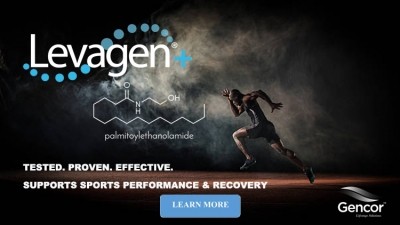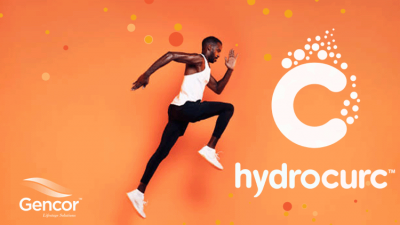Promotional Features
Moving Beyond Protein: How Ingredients Suppliers are Innovating
Sports nutrition category is growing but innovation is stagnant. Learn how ingredients such as Levagen+ PEA and HydroCurc are helping consumers recover quicker, sleep better & workout harder.
The Booming Sports Nutrition Category
The growth of the sports nutrition marketplace is on the climb, and it’s not just for the trained athletes anymore. The number of consumers interested in exercise and nutrition as part of a proactive approach to health and wellness has created a spike in demand for nutrition and supplement solutions.
The sports nutrition market was reported to be worth $12bn in 2016, with projected growth at a CAGR of 8-10% until 2021 (Euromonitor International, 2018). However, even with the growth within the industry and the rise in the active consumer, there seems to be a lack of innovation. Protein-based products account for 80 percent of the global muscle-building marketplace1 while the non-protein market accounts for a relatively small ($2.5 billion in 2017) 1 portion of the overall market. This points to significant potential growth for brands and non-protein-based solutions.
Who is Buying?
In the past, athletes have dominated the sports nutrition marketplace. One study found that adult and adolescent track and field athletes who participate in world-championship competitions, took one or more dietary supplements regularly2. In another national survey of about 21,000 U.S. college athletes, men respondents were much more likely to take performance-enhancing supplements than women, except for energy drinks and shots3. In terms of gender breakdown, the female athletes looked to incorporate iron in their supplementation, while male athletes looked to ingredients such as vitamin E, protein, and creatine to enhance their supplementation regimen4.
When you look at which sporting activity attributes for the highest percentage of users of sports nutrition products, ice hockey, wrestling, and baseball ranked the highest among the men and volleyball, swimming, and ice hockey ranked highest among the women3.
Where is the Market Headed?
According to the Physical Activity Council Participation Report, in 2018 there were 4.8 million more people participating in high-calorie activities compared to 20135. Additionally, there is a rise in women interested in sports/active nutrition. With the growing aging population, we’re also seeing consumers interested in aging gracefully. These consumers are looking for safe and natural alternatives to help support their health and performance as they age.
The overall increase in physical activity and the move towards healthy aging seems to be coinciding with the is rise in supplementation. A 2018 study showed that 75 percent of U.S. adults now take supplements, up 10 percent from the year before. Research has also shown when consumers purchase supplements, they tend to have healthier habits than those of non-supplement users6.
With convergence of increase in physical activity and supplementation, we expect consumers of all fitness levels to look for innovative ingredients beyond protein to support their personal exercise regimen.
Ingredients Leading Sports Nutrition Innovation
We see three major ingredients leading the way in sports nutrition innovation: 1) CBD 2) PEA (Levagen+) 3) Curcumin (HydroCurc). The use of CBD has risen among novice sports enthusiast to elite athletes. Even though CBD holds risk with all the legal and regulatory hurdles, it seems as if buyers of CBD are choosing to look past this. One reason may be due to CBDs said effects on the endocannabinoid system, which helps regulate sleep, immune-system responses, relaxation, pain, and more6.
When CBD enters the body, it activates or inhibits other compounds or cell receptors. For example, CBD moderately inhibits the degradation of the endocannabinoid, Anandamide, a compound associated with regulating pain11. And while the cannabis market is expected to be about $57 billion by 20277, the complexity of regulations is steering some product formulators and manufacturers away and forcing them to look for alternatives, which have similar anti-inflammatory and analgesic properties.
One novel alternative to CBD that influences the endocannabinoid pathway is palmitoylethanolamide (PEA). PEA is an endogenous Fatty Acid Amide that acts as an endogenous agonist of a nuclear receptor called PPAR-alpha. By activating this receptor, PEA exerts potent analgesic and anti-inflammatory effects and can enhance the analgesic effects of the endocannabinoid substance anandamide.
PEA resembles CBD in that both substances have anti-inflammatory and neuroprotective properties, however, PEA is naturally produced by the human body, unlike CBD. PEA is endogenously produced as a direct response and repair mechanism to inflammation and pain. A branded and clinically validated PEA ingredient, Levagen, is not only NSF and LGC tested for WADA-prohibited substances, it is also a safe and legal answer to CBD’s issues, thus having wide approval by elite athletes. In addition, many finished sports nutrition brands will go a step further by applying for an Informed Choice and/or Informed Sports accreditations granted by LGC. This builds trust and authenticity by showing that the product has undergone specific procedures, proving quality, safety, and efficacy and that it contains no banned substances in the sporting context.
Another well-known ingredient shown to have significant anti-inflammatory and antioxidant properties is curcumin. A lesser-known element of curcumin are the numerous clinical studies demonstrating its ability to aid with delayed onset muscle soreness (DOMS)8. Exercise-induced inflammation is a major cause of DOMS and delays the time for athletes to get back to training.
By reducing markers of inflammation and influencing receptors involved with pain, ingredients such as HydroCurc (an extract of curcumin) and Levagen (PEA) by Gencor, both have great profiles to reduce downtime post-exercise.
What’s Next?
Brands need to think beyond the traditional athletes and protein-based solutions. The modern consumer is demanding a new, more personalized solution to sports nutrition. The ability of a brand to develop numerous product formats, suitable for both men and women, which addresses recovery, aches, sleep, and inflammation, automatically puts you in the lead, helping you move beyond protein and providing what the consumer wants.
References:
1) “Sports Nutrition: Pure Energy, Pure Ingredients.” Natural Products INSIDER, 28 Sept. 2018, www.naturalproductsinsider.com/sports-nutrition/sports-nutrition-pure-energy-pure-ingredients.
2) “2018 CRN Consumer Survey on Dietary Supplements.” Council for Responsible Nutrition, Oct. 2018, www.crnusa.org/CRNConsumerSurvey.
3) Tscholl P, Alonso JM, Dollé G, Junge A, Dvorak J. The use of drugs and nutritional supplements in top-level track and field athletes. Am J Sports Med 2010;38:133-40. [PubMed abstract]
4) NCAA National Study of Substance Use Habits of College Student-Athletes, August 2014.
5) Knapik JJ, Steelman RA, Hoedebecke SS, Austin KG, Farina EK, Lieberman HR. Prevalence of dietary supplement use by athletes: systematic review and meta-analysis. Sports Med 2016;46:103-23. [PubMed abstract]
6) Johnson, Jon. “CBD Oil for Pain Management: Effects, Benefits, and Uses.” Medical News Today, MediLexicon International, 16 Mar. 2018,
7) Pellechia, Thomas. “Legal Cannabis Industry Poised For Big Growth, In North America And Around The World.” Forbes, Forbes Magazine, 1 Mar. 2018, www.forbes.com/sites/thomaspellechia/2018/03/01/double-digit-billions-puts-north-america-in-the-worldwide-cannabis-market-lead/#6a648afe6510.
8) https://www.ncbi.nlm.nih.gov/pmc/?term=curcumin+and+DOMS
9) http://www.physicalactivitycouncil.com/pdfs/current.pdf
10) “2019 PHYSICAL ACTIVITY COUNCIL’S OVERVIEW REPORT ON U.S. PARTICIPATION.” Physical Activity Council, 2019, www.physicalactivitycouncil.com/pdfs/current.pdf
11) Leweke, F M, et al. “Cannabidiol Enhances Anandamide Signaling and Alleviates Psychotic Symptoms of Schizophrenia.” Nature News, Nature Publishing Group, 20 Mar. 2012, www.nature.com/articles/tp201215.
